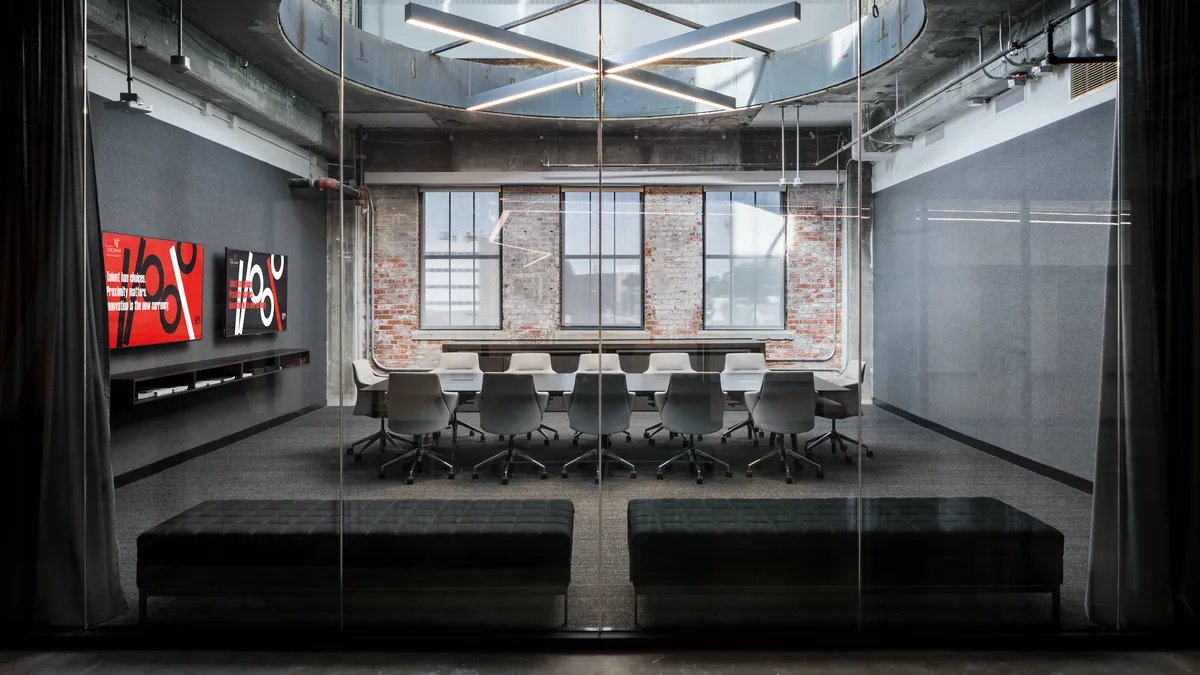Dive Brief:
- The Cincinnati Innovation District (CID) celebrated its first anniversary March 6, and leaders said it has served as a "beacon" of inspiration amid the pandemic for cities looking to attract talent and partner with the private sector.
- Since launching with help from the University of Cincinnati, the CID has partnered with Microsoft, IncludeHealth, Kao Brands, and the Hillman Accelerator. It has led initiatives to help workers gain digital skills and hosted a "hackathon" for students at the university to address current challenges. It also ran a competition where students could create branding and sales pitches for products.
- The CID said it is still on track to reach its goals of ultimately creating 20,000 new jobs and $3 billion in annual economic impact to the region, while accelerating STEM graduates by 15,000 students and research by $2 billion. The CID has already inspired similar efforts in other Ohio cities, as Gov. Mike DeWine, Lt. Gov. Jon Husted and others announced in early 2021 separate innovation districts in Columbus and Cleveland modeled on Cincinnati's, with an emphasis on attracting and retaining talent.
Dive Insight:
As competition heats up between cities seeking to attract more residents by transforming into tech and talent hubs, many local leaders have sought partnerships with academic institutions and private companies to start similar innovation districts or initiatives.
There are also signs that companies are looking to create similar talent centers beyond traditional powerhouses like Silicon Valley and New York City. Airbnb, for instance, recently said it would open a technical hub in Atlanta, while Microsoft said in 2019 it would open a smart cities technology hub in Syracuse, NY.
Cincinnati, too, has made moves to become more innovative. The city pioneered a Wi-Fi project to help bolster its "Smart Cincy" vision and reduce the digital divide, while in other areas it has partnered with Uber to adapt its mobility landscape, looked to street murals to help calm traffic, and has plans to build the nation’s largest city-led solar array to curb emissions.
David Adams, chief innovation officer at the University of Cincinnati and lead architect of CID, said while initiatives and partnerships are helpful, companies must have access to talent to help make their vision a reality.
"If there's been a fundamental shift that's happening in our world today, not just here in North America, physical capital is no longer the constraints, it’s human capital," Adams said. "Every organization is working to get access to that capital, and not dissimilar from how a supplier of a particular good is working to get close to the end consumer, companies who are looking to get access to that talent want to be as close to the source of that town as they can be."
The CID had plans for in-person workshops, networking and events, but saw those efforts curtailed almost as soon as it opened due to the pandemic. Instead, officials moved much of their programming online but still made progress via initiatives like helping startups get off the ground and collaborating with the student population on their research and experiments.
The digital operations have forced a level of innovation using the tools that employers have relied on during the pandemic, which could continue to help once the worst of the pandemic is over, Adams said.
"As we come through the pandemic, it's clear that the companies continue to tell us we're going to be back because innovation is a collision sport, and we need to collide with one another physically," Adams said. "But we also recognize that we now have a complementary platform via the digital world to leverage those technologies as well. It's actually in a strange way been a blessing and this pandemic has forced us to innovate. Necessity is the mother of all invention, and I think we are a living example of that."












